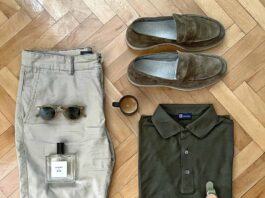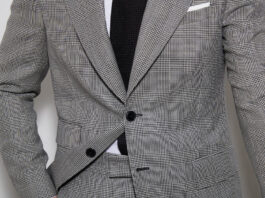
There are many reasons to hate the squat. It’s hard to get right, for one. It hurts for days, too. So the thought of doing 100 squats a day is, to most reasonably-minded people, absolute torture. Get through it, however, and the potential rewards are great.
Sure, along with the bench press and deadlifting, it’s one of the ‘big three’ movements of compound training, but getting it right is far from simple. Like the other two, the squat requires you to rope in muscle groups from all across the body, combining balance, strength, and power to get it right. All of which relies on good form. No, scratch that. To squat without injury, good form is essential.
We’re not talking about a barbell squat, either. Or even practising with the relative safety of the smith machine. At its most basic, the bodyweight squat is still a difficult beast to pin down. Which is why, in the name of good form, strong gains, and injury-free quads, we corralled some of the finest experts in the business to talk you through mastering the squat. Call if you need a leg up.

The Experts
- James Castle-Mason – an all-round wellness guru, and master trainer and PT at London’s elite Roar Fitness.
- Luke Worthington – as well as being a fantastic man, Luke is a biomechanics expert and personal trainer working with MMA fighters, and Commonwealth and Olympic level athletes across the UK, USA, Russia, and Europe. He’s also a movement and performance specialist at London’s Third Space.
- David Arnot – As a PT working with healthy eating innovators Nutrifix, and part of elite trainers Evolve 353, Arnot knows the importance of building a powerful body.
Why Are Squats Important?
Let’s start at the beginning. Very few men do squats for fun. You never saw a squat montage in a Rocky film, so that’s the point? Well, turns out the benefits are as numerous as Stallone’s veiny muscles.
Worthington takes a practical approach, pointing out that logistically, mastering the squat at home means you get a good workout at home and don’t have to travel to the gym, and aren’t limited by travel time. Castle-Mason goes a little deeper: ”Squatting is a perfectly natural human movement, one that children can do easily, but most fully-grown adults fail to do.”

So, why do kids have the advantage? What have we lost that they still have? Castle-Mason – and many other experts – thinks the fact that most of us spend our time sitting at desks or playing Red Dead Redemption means that our bodies become stuck and we end up limiting our range of movement. If you don’t use it, you lose it.
The squat is useful because it forces us to move in a way that should be second nature, but in the 21st century world of offices and Netflix, isn’t natural any more. But, master the squat and other office-induced problems like back pain will benefit: “Bodyweight squats themselves and learning to sit into the bottom of a squat can drastically improve your body’s ability to re-learn lost movement patterns and stabilise in the bottom position,” says Castle-Mason.
So: squat more, and you’re posture will benefit too.
Mastering the squat won’t just benefit you today, either. As Arnot points out, the older we get, the less we tend to move. As we reach middle age and beyond, squatting can help keep our hips mobile, as well as strengthening the muscles around the hips and upper legs.
Biomechanics aside, the glutes and hamstrings are the largest muscles in the body, meaning they burn the most calories when stimulated. Squatting is, therefore, the best fat burner you can do without strapping on a pair of running shoes, or forcing yourself through a torturous HIIT routine.
What’s more, building strong legs makes for a solid foundation for other sports. Whether it’s rugby, climbing, snowboarding or fencing, pretty much anything an able-bodied athlete does requires strong, durable legs with a full range of motion. Your legs really are the base of your fitness.
Weighted Squats Vs Bodyweight Squats
As Worthington pointed out above, a good argument for focusing on bodyweight squats in your lounge is that you can work to your schedule, and don’t have to queue up behind a bunch of meatheads for a free barbell. Also, you can always buy a pair of dumbbells to keep at home so you’re not squatting only your bodyweight. If you’re starting out, master the basics at home before you decide to build on it in the gym.

“Whether you squat with your bodyweight or you hold weight to make you heavier, the biomechanics are pretty similar,” Arnot says. So, at home or in the gym, you’ll be working through the same motions. The main difference is that you will likely have access to greater load at the gym, meaning that once you’ve perfected form you’ll be able to gain more muscle there.

How Do I Perform The Perfect Squat?
The first thing to remember is that getting set up right at the start of a squat is essential. Stand with your feet shoulder-width apart, your weight distributed over your feet, and evenly between the two. “Imagine your big toe is bolted to the floor,” says Arnot. “Try to screw your knees outward; this will create a strong arch in your feet and create tension in the upper leg muscles. As you lower, focus on hinging at the hip and then the knee. Don’t be scared to lean forward, that will allow you to sit your hips backwards into the squat.”

When it comes to feet, it’s important to remember that the majority of your weight should be on your heels. You want to sit back into a squat, not lean forward, so the weight shouldn’t be on your toes. As with deadlifts, messing up weight distribution at this stage can mean your back gets roped in, which can be very dangerous, and lead to long-term aches and pains.
“As you get lower keep your knees pressing outwards to create space for you to sit into a nice low squat without your lower back having to bend,” continues Arnot. “Keep your core stiff, to come back up push your feet into the floor and think about squeezing your glutes and stand nice and tall.”
“A mechanically sound squat should have the tibia (shin bone) and torso (upper back) remain parallel as you move up and down,” adds Worthington. “These markers will ensure you’re moving correctly through the ankle, knee and hip joints.”

If motion is lacking at one or more of these joints then ‘extra’ motion is required at the others – essentially, you’ll overcompensate and the squat will become unbalanced.
How deep you have to go is a question for you and you alone. And while the aim is to sit comfortably into the squat, see this as something to work towards, not the gold standard you should hit on the first go.
Worthington, for one, is not a fan of this “ass to grass” approach. “Pelvic anatomy is an individual thing, a person’s range is determined by their body, their tissue extensibility, and their strength and motor control,” he says. “There is no one size fits all.” The focus, he says, should be on moving your body through the largest range of motion you feel comfortable with, while maintaining good postural alignment and avoiding pain.
Got all that? Well, just in case you need us to go through it again, Castle-Mason has put together the handy three-point checklist below:
- 1. First Cue: Look up with your eyes. I see so many people unracking a bar and looking down at their feet. Don’t do this; your feet will naturally go to where you would like them to. Whether using a bar or relying on bodyweight alone, looking down loses tightness in the upper body which is critical for efficient movement
- 2. Second Cue: Brace – Imagine someone was going to punch your stomach, you’d brace for impact, right? Taking a bellyful of air and switching the abdominals on before descending is a must for efficient and safe movement
- 3. Third Cue: Screw your feet into the floor. Point your feet out, say 10 degrees, then actively try to turn them on the spot, like a screw without moving them. This screw your feet into the floor motion works fantastically for getting the hip muscles engaged
How To Do 100 Squats A Day
Slow down, soldier. You’ve just performed a squat you’re happy with. Reaching five with good posture should be your first goal. Once you have that down, you can aim for 10, and then start thinking about 10 sets of 10 over the course of a day. Rush this, and it’s false economy; you’ll put your leg out on the first rep, and that’s you done.
Once you really, really have your posture down, and can honestly say you aren’t kidding yourself, Castle-Mason thinks the best way to progress would be to aim for 10 squats a day, over one week. Then, aim for 20 per day the next week, and so on. In this manner, you won’t overload your muscles by doing 100 in one day, then nothing for a week. Work every day and your legs know to expect X amount of work per day, instead of being shocked into pushing out 100 reps all at once.
Still having trouble? Arnot has a few exercises that can help you build on the basics: “Sit on a chair, and stand up.” Got it? OK, thanks for reading, and have a great day. Oh, hang on, there’s more: “Try lower chairs, then try hovering just above the chair seat for 10 seconds. Once you’ve mastered that, you can try the bodyweight squat,” he says.

Not only will this absolutely burn out your hamstrings (in a good way) it’ll help build the stability required for big numbers of squats. And once you’ve got that down, you can work towards your 100. Try 30 seconds of squats, with 60 seconds off. Keep at it until you’ve managed 50 squats. When this becomes easy, cut down the rest period. For example, you might do 10 squats in 30 seconds, resting for 15, meaning you’ll achieve 50 squats in 3.5 minutes. You can then build up to 75 squats, and so on.
Arnot’s method is obviously different to Castle-Mason’s but both will work. It’s just a case of seeing what works for you. If you’re confident you have your posture down, and want quick results gained safely, Arnot’s might work for you. If you want to gradually work your way up safely and slowly, Castle-Mason’s might be a good shout.
Anything Else I Need To Know?
Funny you should ask. Yes. Avoiding injury should be the most important aspect of your squatting technique. It doesn’t matter if you can do 100 one day if you can’t walk for the following week. Worthington suggests a vigorous warm up of leg, hips and upper back stretches, as well as getting a PT to work with you through your squats.
The cool-down is equally as important, especially if you’ve felt a twinge in your spine during the workout. Arnot suggests a light walk or cycle to help get the blood moving, clearing any toxins from damaged tissue, as well as supply oxygen and antioxidants to any damaged sites. A good sports massage or bath with Epsom salts can help your muscles relax.
Finally, Castle-Mason warns against over-training. And, if you do feel yourself seizing up, make sure to foam roll your glutes, hip flexors, adductors, IT band, and calves to ensure these muscles don’t get overly tight and knotted up, limiting movement.
Other than that, keep pushing, focus on posture and weight distribution, and you’ll nail it in no time. It’s just about putting in the leg work.












